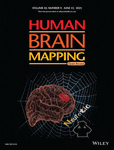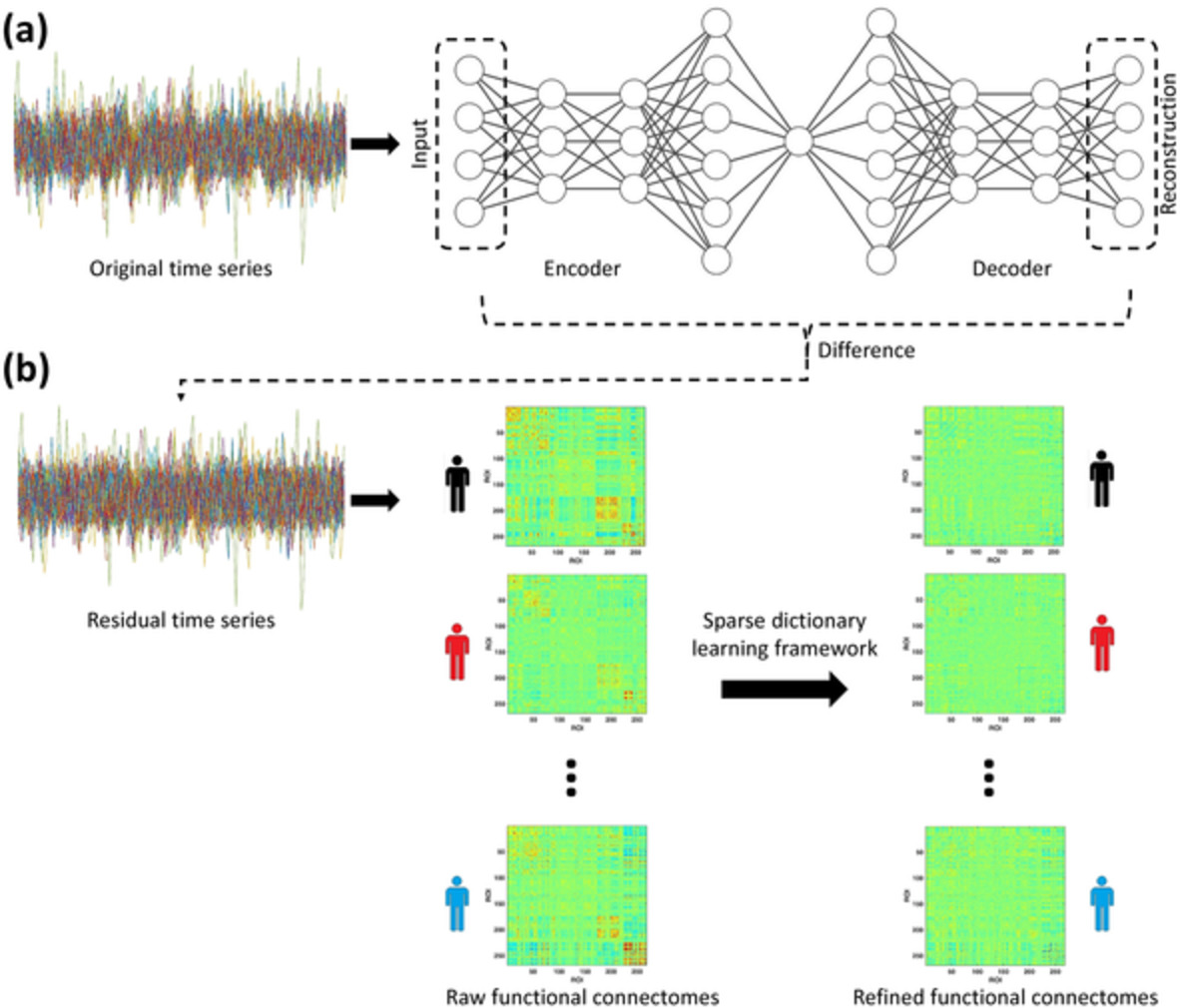Journal list menu
Export Citations
Download PDFs
COVER IMAGE
Cover Image
- First Published: 17 May 2021
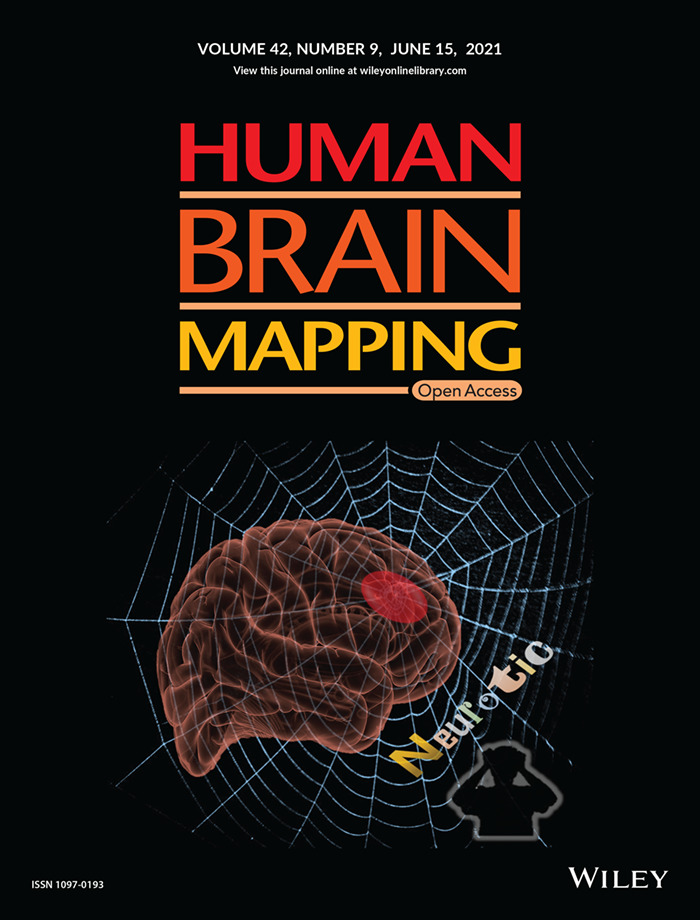
COVER ILLUSTRATION The meta-analytic morphological variations in the bilateral dACC/mPFC (illustrated as the red brain area) were consistently associated with interindividual differences in neuroticism. Individuals who are highly neurotic, characterized by general tendency to negative emotions and thoughts (illustrated as the cobweb), have greater gray matter volume in the bilateral dACC/mPFC than people who are less neurotic.
ISSUE INFORMATION
RESEARCH ARTICLES
Distinct and temporally associated neural mechanisms underlying concurrent, postsuccess, and posterror cognitive controls: Evidence from a stop-signal task
- Pages: 2677-2690
- First Published: 02 April 2021
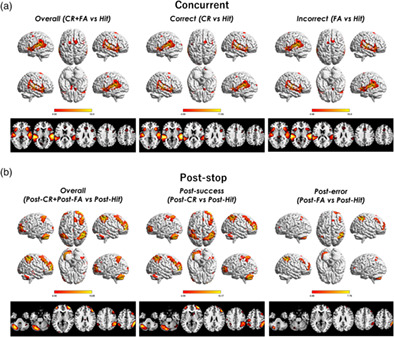
Concurrent cognitive control activated regions in the cingulo-opercular network and sensory cortices, while poststop cognitive control activated regions in the fronto-parietal network and cerebellum. During correct trials, concurrent and poststop activations were significantly correlated; while during erroneous trials, concurrent activations were only correlated with posterror activations in the fronto-parietal network but not cerebellum. Postsuccess cognitive control was associated with inhibitory connectivity from the prefrontal cortex to cerebellum, while excitatory connectivity from the prefrontal cortex to cerebellum was present during posterror cognitive control.
Functional connectome fingerprinting: Identifying individuals and predicting cognitive functions via autoencoder
- Pages: 2691-2705
- First Published: 09 April 2021
Gray matter structures associated with neuroticism: A meta-analysis of whole-brain voxel-based morphometry studies
- Pages: 2706-2721
- First Published: 11 March 2021

In this meta-analysis, we used the anisotropic effect size signed differential mapping (AES-SDM) to investigate the association between neuroticism and gray matter (GM) structures based on previous whole-brain voxel-based morphometry (VBM) studies. Our analysis revealed that neuroticism was consistently associated with the GM structure of a cluster spanning the bilateral dorsal anterior cingulate cortex and extending to the adjacent medial prefrontal cortex (dACC/mPFC). Our findings may shed light on the elucidation of the neural mechanisms that underpin individual variations in neuroticism and the determination of promising intervention targets for neuroticism, which may reduce the risk of anxiety and mood disorders.
The cross-sectional interplay between neurochemical profile and brain connectivity
- Pages: 2722-2733
- First Published: 09 April 2021
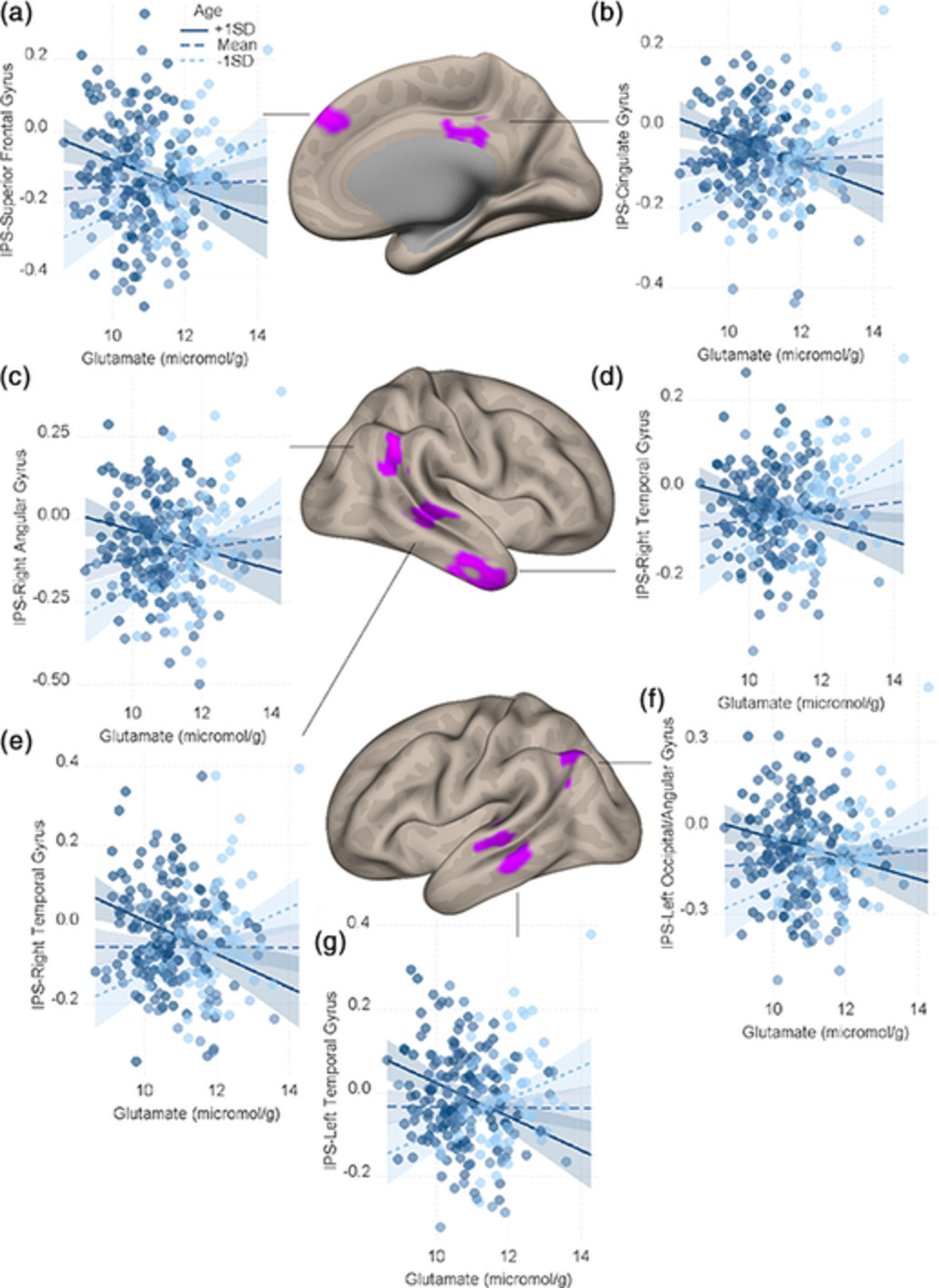
We revealed the developmental trajectories of 20 neurochemicals in two key developmental brain regions (the intraparietal sulcus, IPS, and the middle frontal gyrus, MFG). We demonstrated that glutamate concentration within the IPS is modulated by age in explaining IPS connectivity with frontal, temporal, and parietal regions. Our findings offer specific developmental insights on the interplay between the brain's resting activity and the glutamatergic system both of which are crucial for regulating normal functioning and are dysregulated in several clinical conditions.
Beware of white matter hyperintensities causing systematic errors in FreeSurfer gray matter segmentations!
- Pages: 2734-2745
- First Published: 30 March 2021
Improving the sensitivity of cluster-based statistics for functional magnetic resonance imaging data
- Pages: 2746-2765
- First Published: 16 March 2021
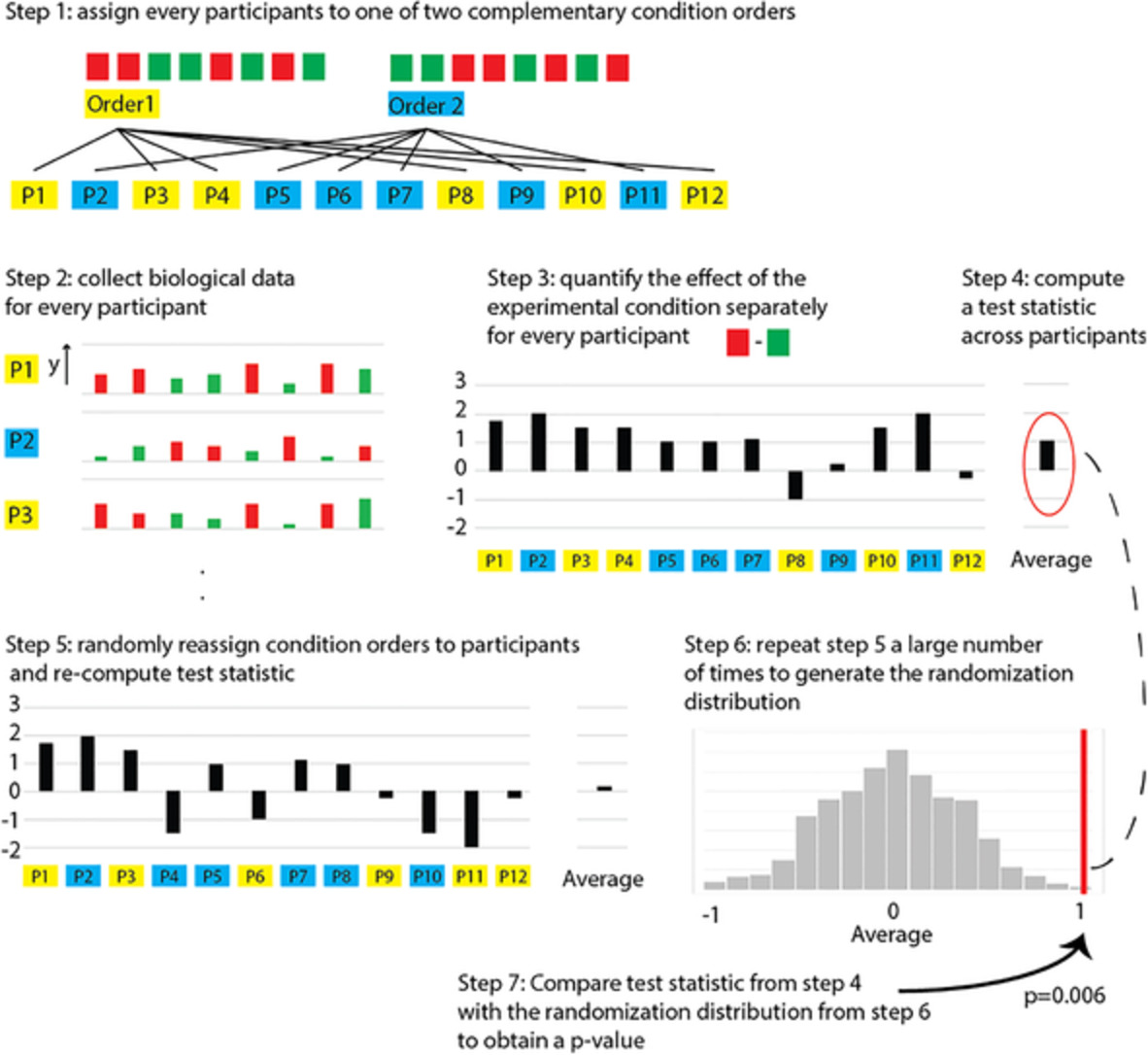
We present a combination of two approaches for functional magnetic resonance imaging data analysis that together result in substantial improvements of the sensitivity of cluster-based statistics. The first approach is to create novel cluster definitions that optimize sensitivity to plausible effect patterns. The second is the min(p) method, which is a novel way of combining test statistics with different sensitivity profiles.
The effect of risperidone on reward-related brain activity is robust to drug-induced vascular changes
- Pages: 2766-2777
- First Published: 05 March 2021
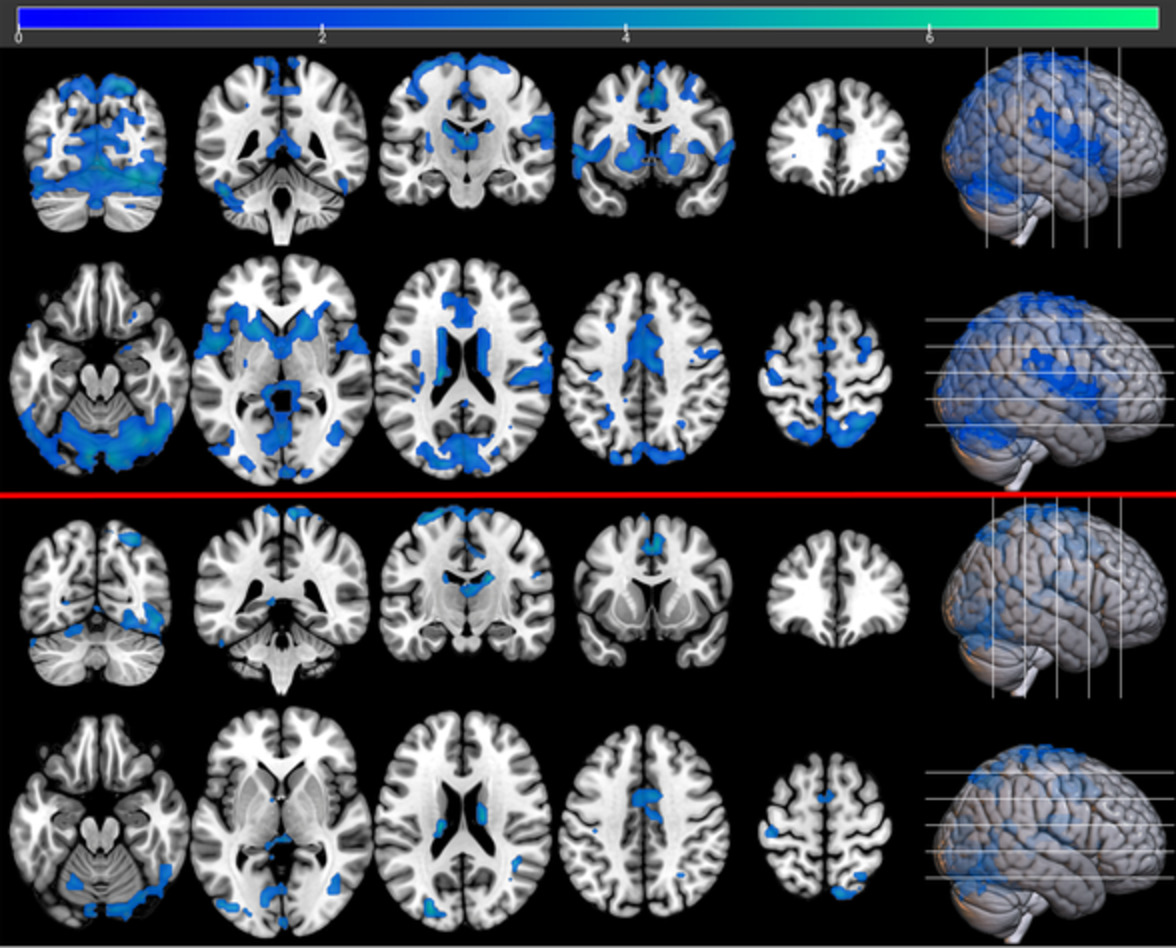
Single dose risperidone produces dose-response and divergent effects on different phases of reward-related brain activity in healthy human volunteers in a placebo-controlled fMRI study. These effects persist after accounting for potential nonneuronal effects of the drug on cerebral blood flow and cerebrovascular reactivity (as measured by a breath hold challenge).
Representation of visual numerosity information during working memory in humans: An fMRI decoding study
- Pages: 2778-2789
- First Published: 11 March 2021

During an fMRI experiment, participants performed a retro-cue delayed match-to-sample task in which the numerosity of visually presented dot stimuli were maintained in working memory. We found mnemonic numerosity-specific activation in the right lateral portion of the intraparietal sulcus, which suggests that the IPS retained working memory representation independent of perception.
Brain dynamics: Synchronous peaks, functional connectivity, and its temporal variability
- Pages: 2790-2801
- First Published: 20 March 2021
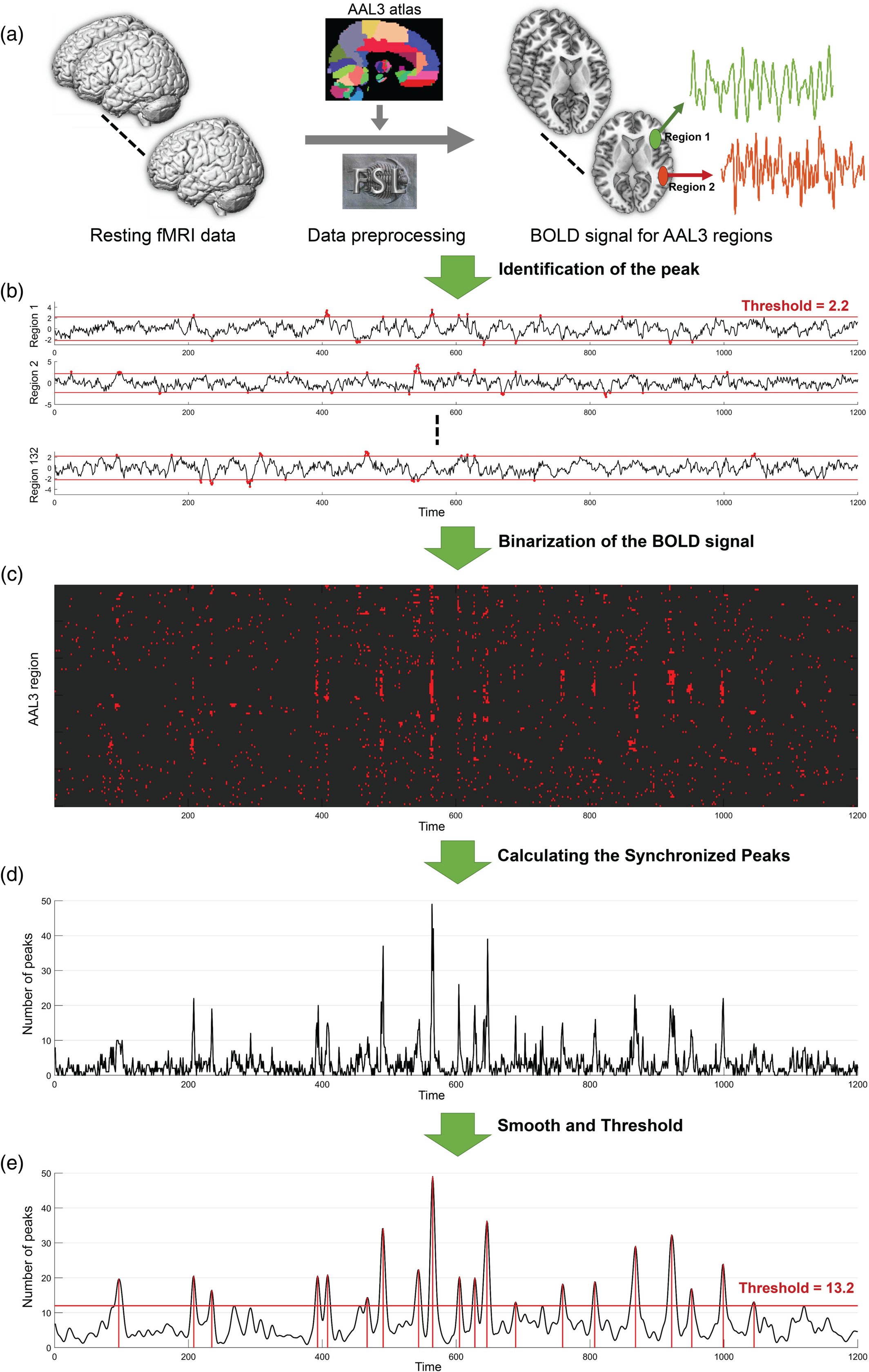
Peaks in the resting state BOLD signal of different brain areas can become synchronized and the size of these synchronized events follows a power law distribution, consistent with avalanche dynamics that are found when a system is close to a critical point. We show that a high probability of synchronization events and a low temporal variability of the connectivity of cortical areas are related to high mean functional connectivity, and provide an account of how these dynamics arise, and where they start in the brain.
Brain network integration dynamics are associated with loss and recovery of consciousness induced by sevoflurane
- Pages: 2802-2822
- First Published: 19 March 2021

We use functional MRI to study the effects of sevoflurane anaesthesia on the dynamics of integration and segregation in the human brain. We show that brain states characterised by high integration are especially vulnerable to general anaesthesia, in terms of both complexity and information capacity. Higher doses of sevoflurane also compromise the temporal balance of integration and segregation in the human brain.
Early-stage Parkinson's disease: Abnormal nigrosome 1 and 2 revealed by a voxelwise analysis of neuromelanin-sensitive MRI
- Pages: 2823-2832
- First Published: 10 March 2021
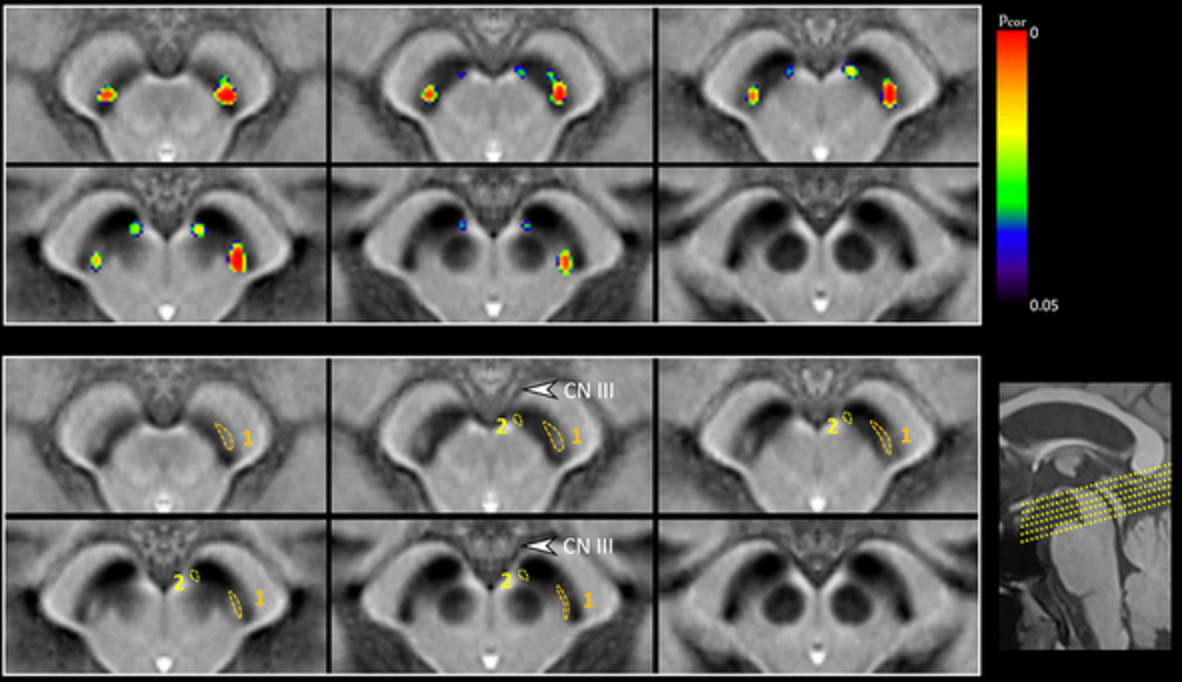
Ninety-six healthy subjects and 50 early-stage IPD patients underwent both a 0.8 × 0.8 × 0.8 mm3 NM-MRI and a 0.5 × 0.5 × 1.0 mm3 multi-echo gradient-recalled echo imaging for SMwI. Using both NM-MRI and SMwI templates, we conducted voxelwise analysis of NM-MRI between healthy subjects and IPD patients, and found that two regions (nigrosome 1 and nigrosome 2) of the substantia nigra pars compacta are separately affected in early-stage IPD.
Revealing the mechanisms behind novel auditory stimuli discrimination: An evaluation of silent functional MRI using looping star
- Pages: 2833-2850
- First Published: 17 March 2021
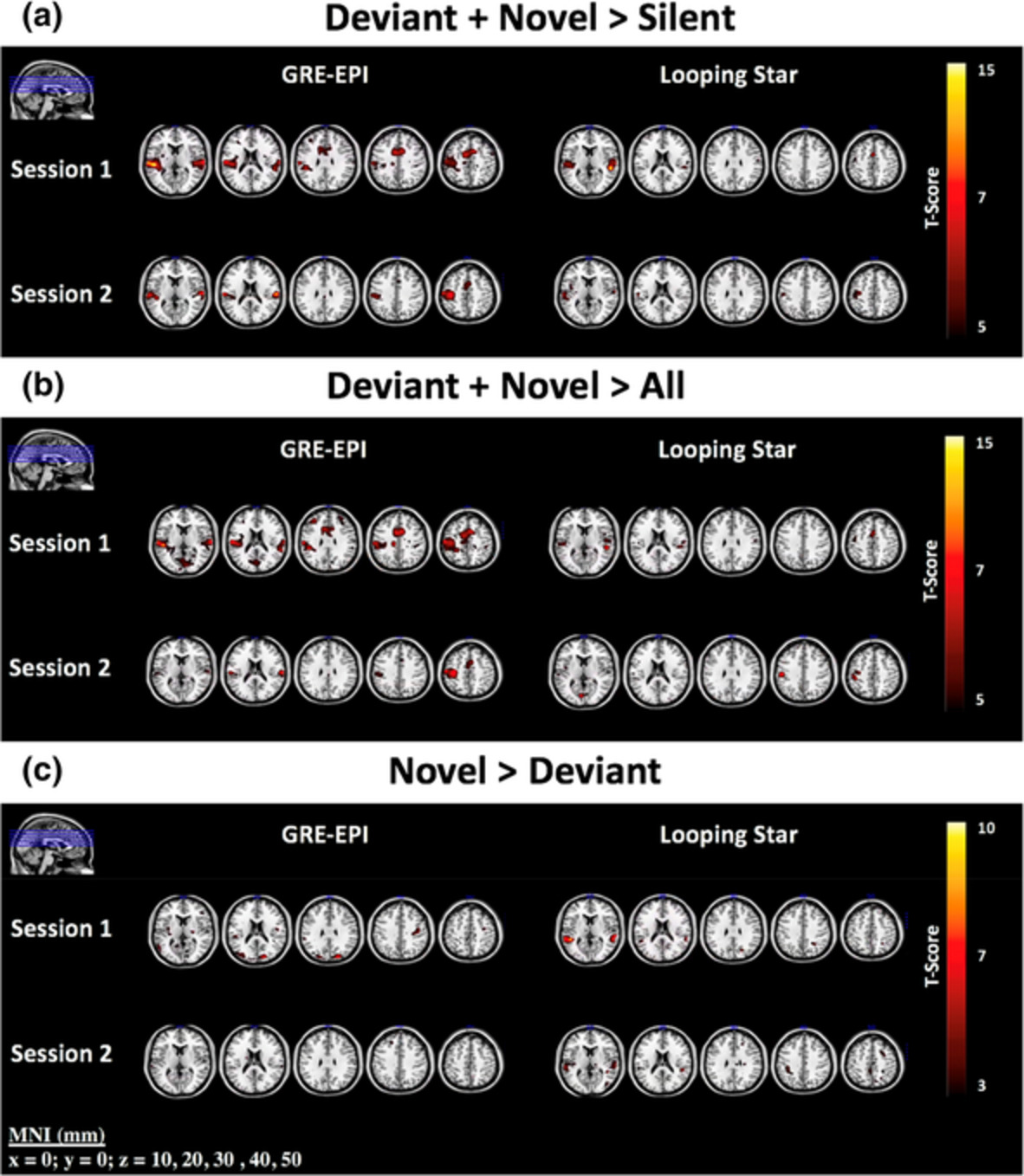
Looping Star is a new multi-echo functional magnetic resonance imaging technique (fMRI) that reduces acoustic noise of scanning by at least 25dBA, with respect to gradient-recalled echo echo-planar imaging (GRE-EPI)-based fMRI. We demonstrate, for the first time, that multi-echo Looping Star is sensitive to the BOLD response during the auditory “oddball” task, an event-related discrimination paradigm. This is also the first study to evaluate the test-retest reliability of Looping Star in comparison with GRE-EPI.
Impact of HIV-infection on human somatosensory processing, spontaneous cortical activity, and cortical thickness: A multimodal neuroimaging approach
- Pages: 2851-2861
- First Published: 18 March 2021

Forty-four participants with HIV (PWH) and 55 demographically-matched uninfected controls completed a paired-pulse somatosensory stimulation paradigm during MEG and underwent 3T sMRI. These data were used to compute response amplitude, sensory gating metrics, and spontaneous cortical activity power. Our findings indicated both PWH and controls exhibit somatosensory gating, and that spontaneous cortical activity was significantly stronger in PWH within the left postcentral gyrus. Interestingly, within the same tissue, PWH also had significantly reduced cortical thickness relative to controls.
Deep-learning based fully automatic segmentation of the globus pallidus interna and externa using ultra-high 7 Tesla MRI
- Pages: 2862-2879
- First Published: 18 March 2021

Deep brain stimulation (DBS) surgery has been shown to improve the quality of life for patients with various motor dysfunctions. The success of DBS is directly related to the proper placement of the electrodes, which requires accurate detection and identification of the relevant target structures. We present a deep-learning based automatic, robust and accurate segmentation technique from 7 Tesla MRI acquisitions of the globus pallidus externa and interna for DBS surgery planning and postoperative electrode localization.
Functional network estimation using multigraph learning with application to brain maturation study
- Pages: 2880-2892
- First Published: 31 March 2021

We proposed a multigraph learning method to jointly estimate the brain connectivity networks from different paradigms. We further applied Graph Fourier transform to detect hub regions related to brain development in the low-frequency components. Interesting findings have been made and discussed in a real-world data set.
Reduced network integration in default mode and executive networks is associated with social and personal optimism biases
- Pages: 2893-2906
- First Published: 23 March 2021
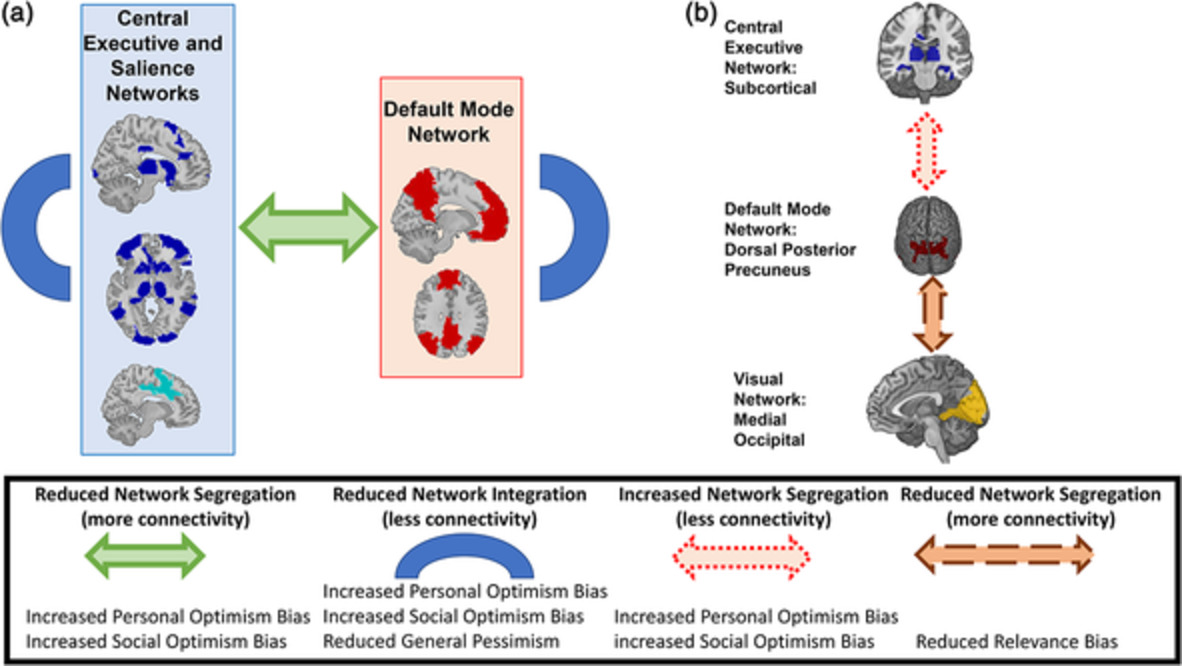
Graphcial abstract
We tested associations of personal and social optimism biases with resting state functional connectivity in the brain. We found a connectivity component that was connected to both personal and social optimism biases. This component was associated with (a) reduced integration of the default mode network; (b) reduced integration of the central executive and salience networks; and (c) reduced segregation between the default mode network and the central executive network. Our finding that optimism biases are linked to resting state functional connectivity indicates that they may be rooted in permanently existing neurobiology.
Cortical and subcortical responsiveness to intensive adaptive working memory training: An MRI surface-based analysis
- Pages: 2907-2920
- First Published: 16 March 2021
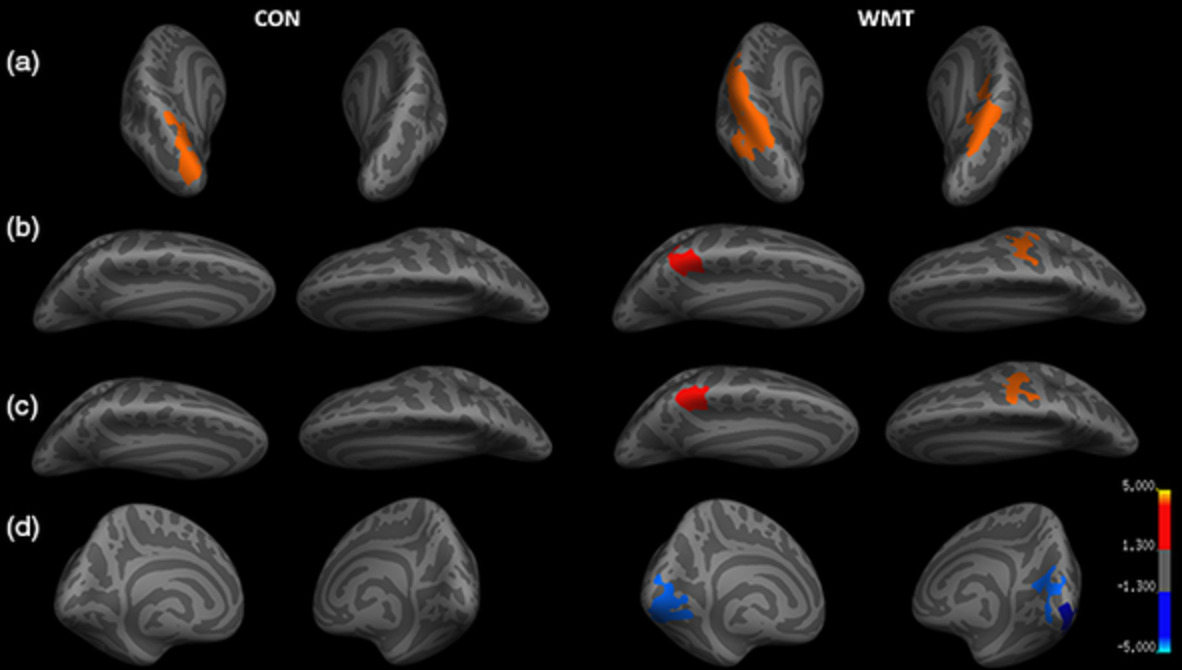
Intensive working memory training as compared to a low-level control training led to increases in cortical folding, cortical volume, and cortical thickness as well as to changes in surface area in several core regions in a group of elderly participants. These training-induced morphometric changes were accompanied by a significant improvement in training performance and verbal working memory performance. Present findings indicate that cortical folding might represent the most relevant and most plastic characteristic of working memory and learning.
Automated fusion of multimodal imaging data for identifying epileptogenic lesions in patients with inconclusive magnetic resonance imaging
- Pages: 2921-2930
- First Published: 27 March 2021

There is no known stand-alone imaging method for epileptogenic zone identification in nonlesional epilepsy. We examined the potential benefit of the automated fusion of results from individual methods. The proposed method can identify epileptogenic tissue with high accuracy at the voxel level, that is, at a millimeters scale.
Spatial correlation maps of the hippocampus with cerebrospinal fluid biomarkers and cognition in Alzheimer's disease: A longitudinal study
- Pages: 2931-2940
- First Published: 19 March 2021
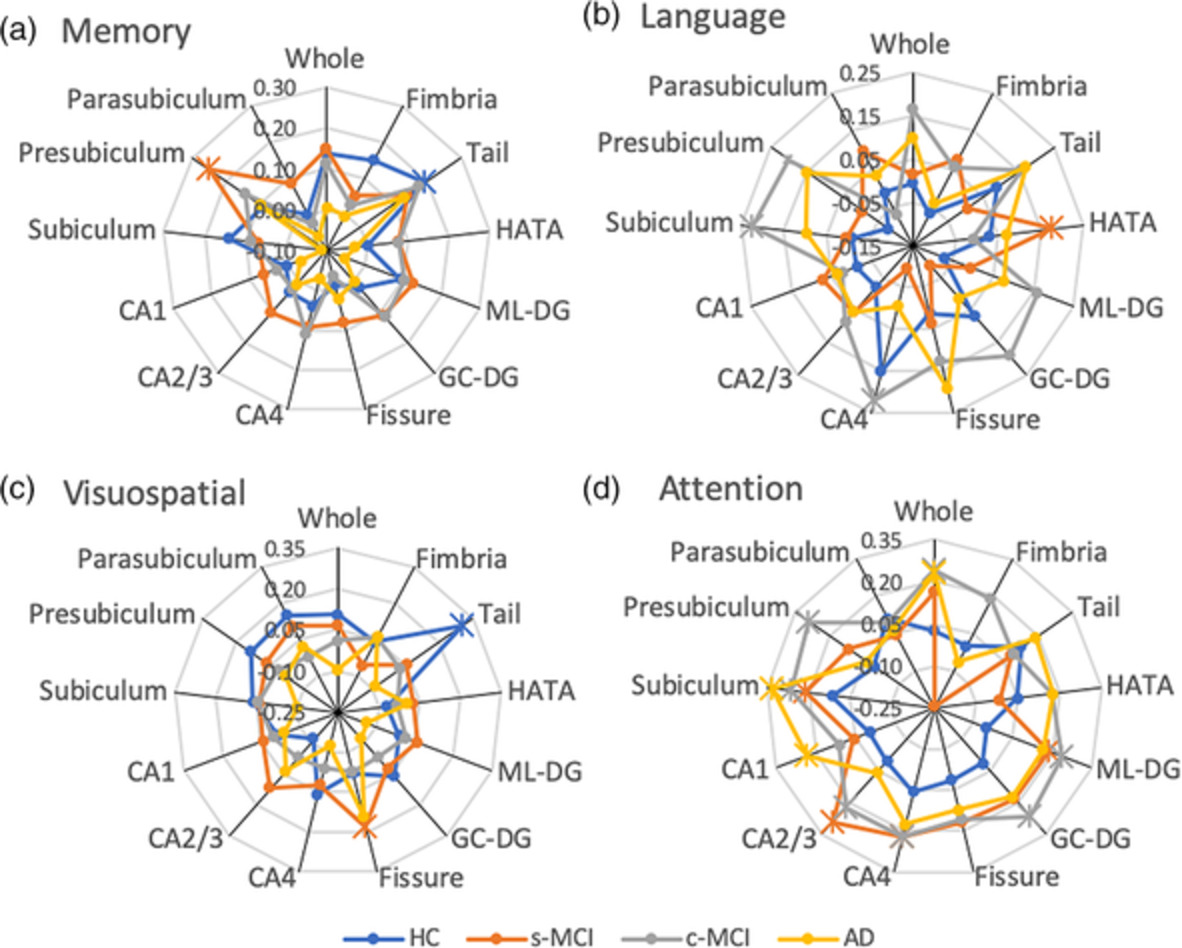
We present spatial correlation maps of the hippocampus and suggest that the hippocampal subfields may not be equally impacted by normal aging, mild cognitive impairment, and Alzheimer's Disease (AD), and their atrophy was selectively associated with declines in specific cognitive domains. The presubiculum atrophy was highlighted as a surrogate marker for the AD prognosis along with tau pathology and attention decline.
REVIEW ARTICLE
Diagnostic power of resting-state fMRI for detection of network connectivity in Alzheimer's disease and mild cognitive impairment: A systematic review
- Pages: 2941-2968
- First Published: 04 May 2021
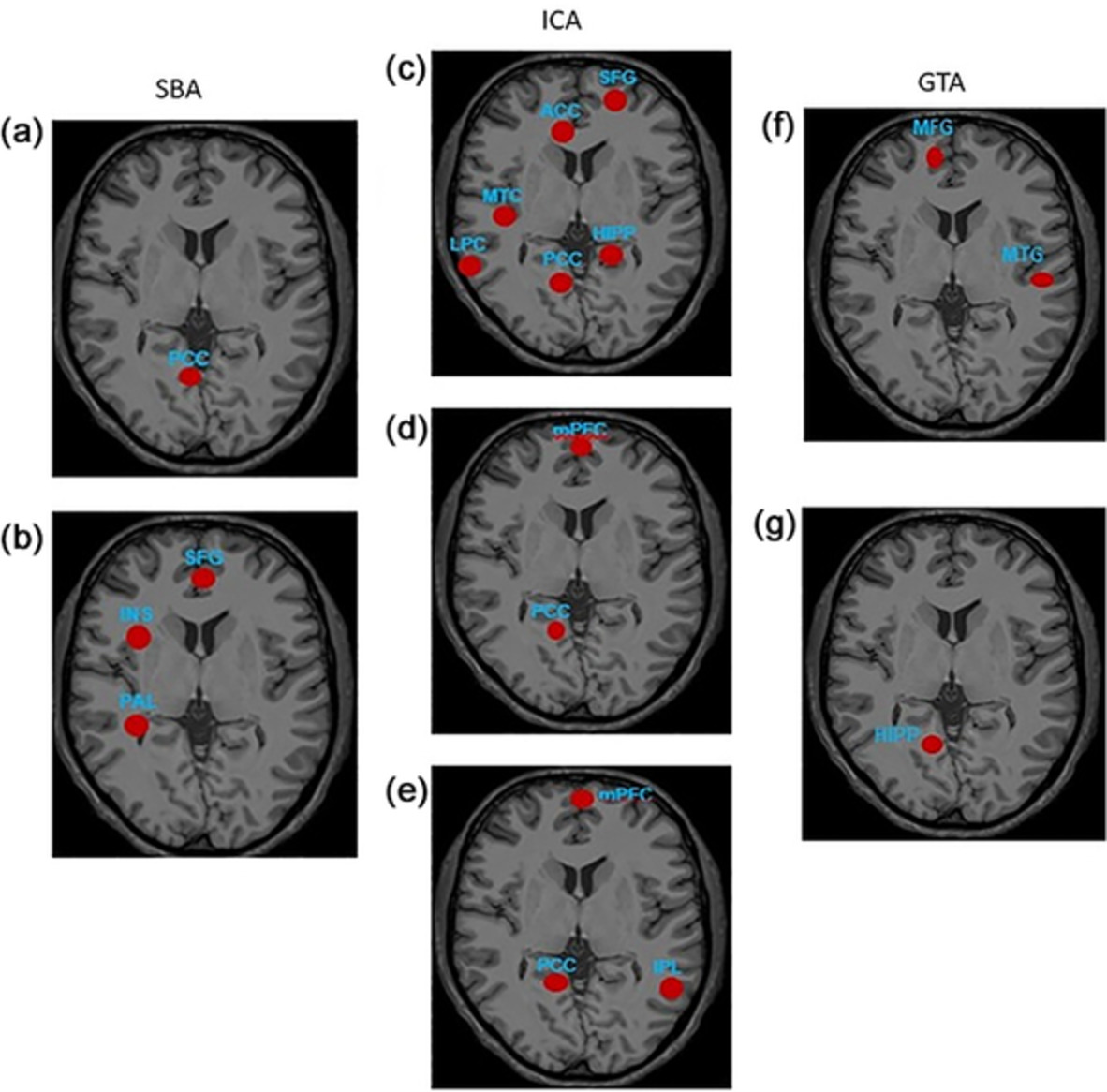
Resting state fMRI (rs-fMRI) can aid in the early detection of Alzheimer's disease (AD) and MCI. Deep machine learning (ML) methods can provide a platform for the assessment of the diagnostic accuracy of rs-fMRI in AD. Much work is yet to be done to achieve homogeneity of the studies before ML can become a mainstream algorithm utilized in clinical practice.




